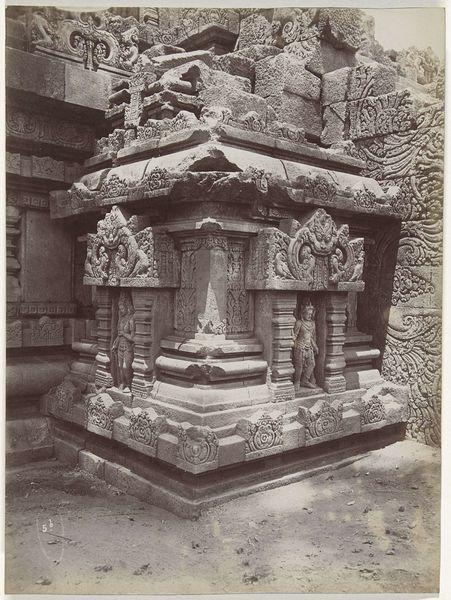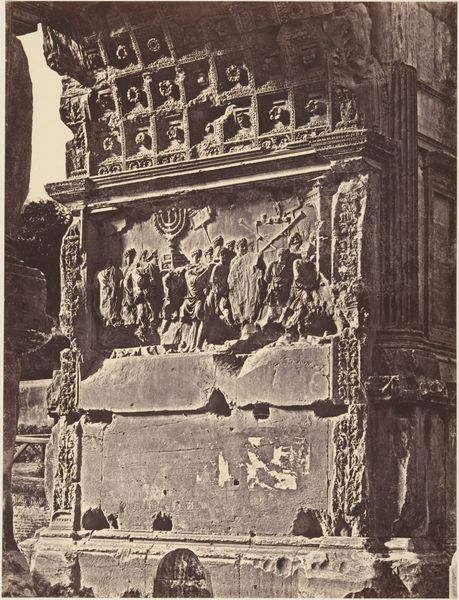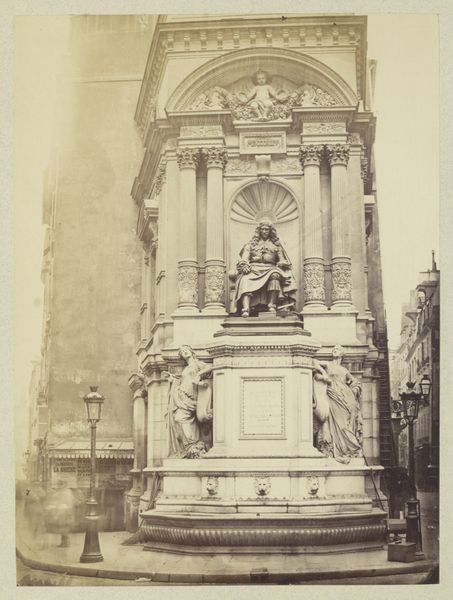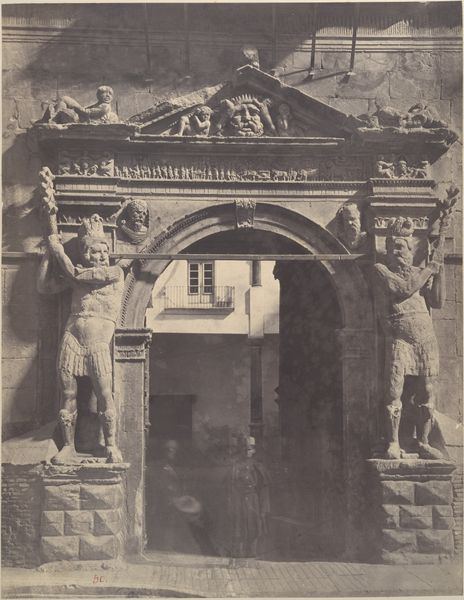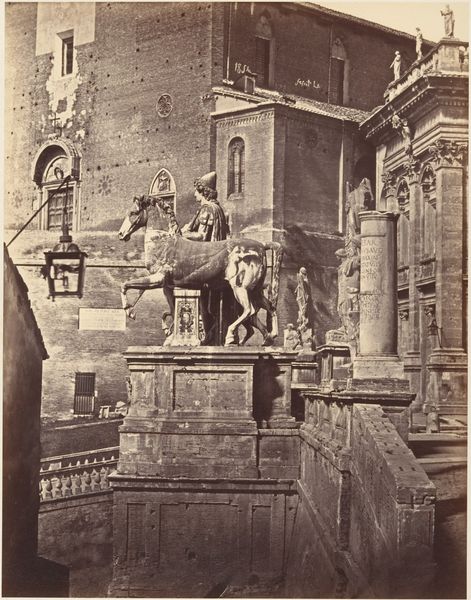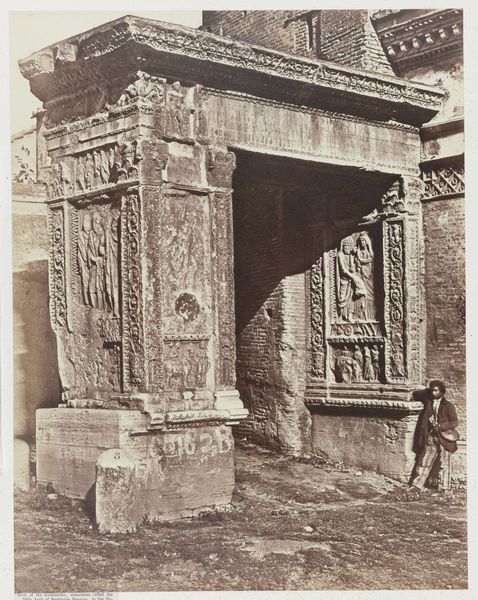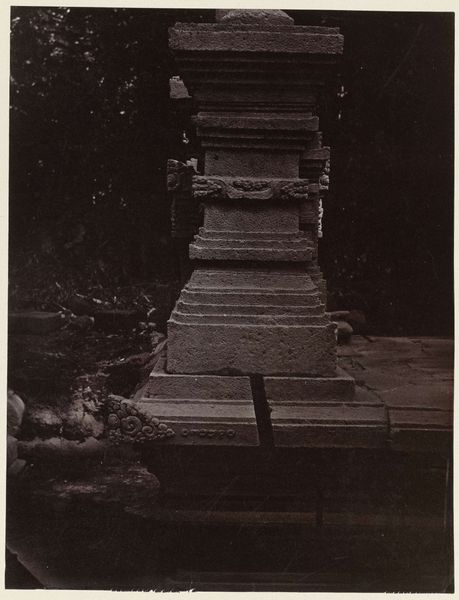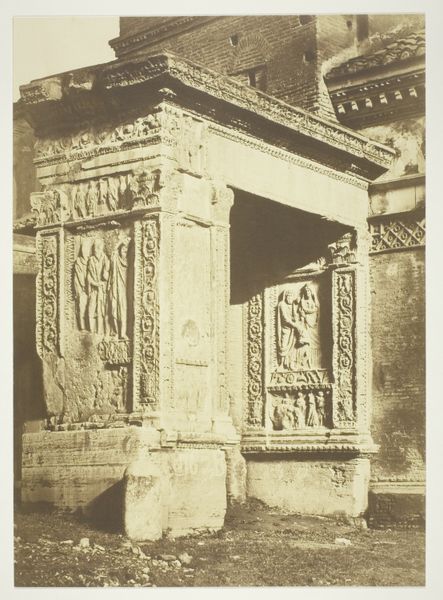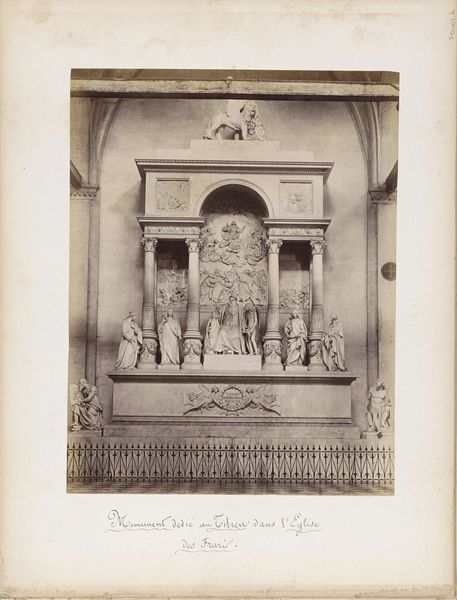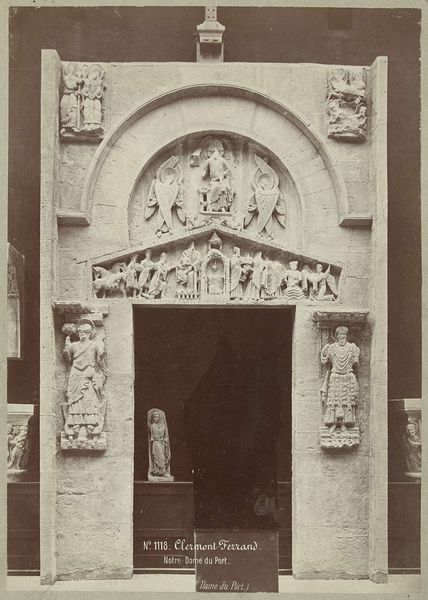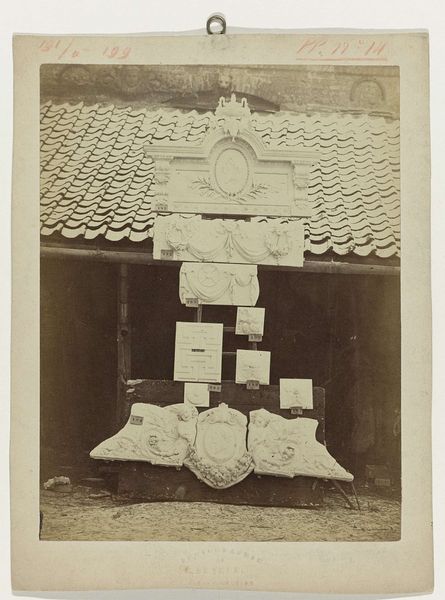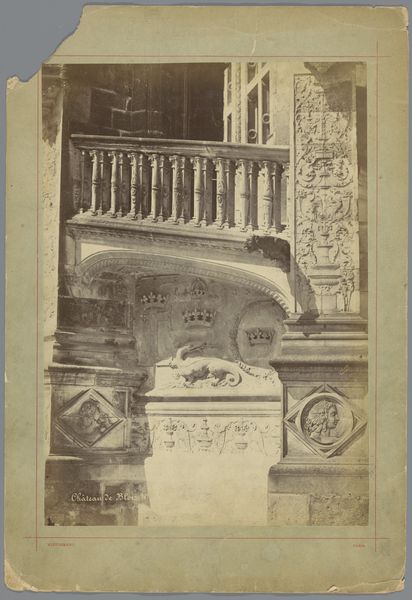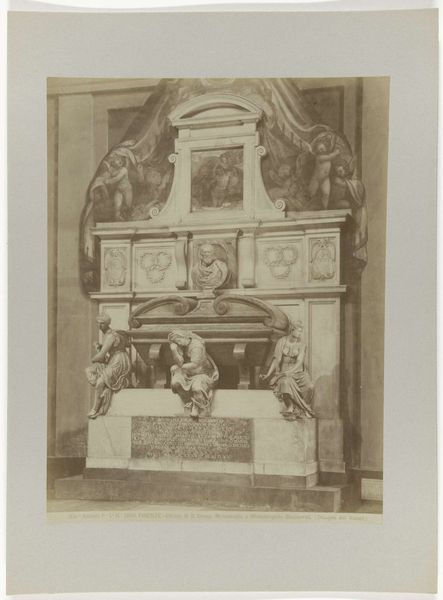
bronze, photography, sculpture
#
neoclacissism
#
bronze
#
photography
#
sculpture
#
cityscape
Dimensions: Image: 11 5/16 × 8 11/16 in. (28.8 × 22 cm) Sheet: 18 1/2 × 12 1/8 in. (47 × 30.8 cm)
Copyright: Public Domain
Curator: Let’s talk about Eugène Constant's photograph, "Fontana delle Tartarughe," taken between 1848 and 1852. Editor: Instantly, there's something very melancholy about it. The sepia tones wash everything with a kind of nostalgic sorrow. The architecture seems to watch over the fountain like stoic guardians. Curator: It is an albumen print, capturing not just the fountain itself but also its urban environment in Rome at the time. Look at how it captures the city’s material history and spatial organization through this sculpture. This period in photography allowed for such remarkable details of texture and light, vital information concerning the social and economic fabric of urban development in Rome. Editor: Exactly! The soft focus kind of diffuses everything into an idea of a cityscape. Almost dreamy in its evocation, like you could simply evaporate into the picture! Look at those bronze figures on top—are they really holding up a basin of water or just burdened with carrying the weight of history, maybe even humanity itself? Curator: Bronze work demands specific mining, smelting and artistic crafting practices that define the quality of an art object. The Neoclassical style prevalent, harkens to earlier periods where artisanal labor was often bound within structures of class and power. Understanding this material production informs an awareness of inequality related social structures across periods of production including in Constant's practice! Editor: Wow. Those implications make me look closer—do you think those boys reaching upward might actually represent someone particular from history? In some sense they seem lost, don't they? The sculpture itself acts as an attempt, like the photographic print, to pause time even just momentarily in the torrent. A powerful yearning for the classical made real once more. Curator: Photography was crucial at that time, capturing not just iconic sculptures, but shaping understandings of antiquity and art, effectively democratizing the images of classic aesthetics to be replicated within homes. Editor: This melancholic gaze back—through marble, bronze, and film—it tells such a compelling narrative. It’s more than documenting an object; it becomes an active engagement in art history and in urban identity in Rome! Thanks, Materialist. Curator: My pleasure. Reflecting on its place within a larger system enriches how we understand an object such as this and how artisanal objects shape class awareness in broader audiences.
Comments
No comments
Be the first to comment and join the conversation on the ultimate creative platform.
